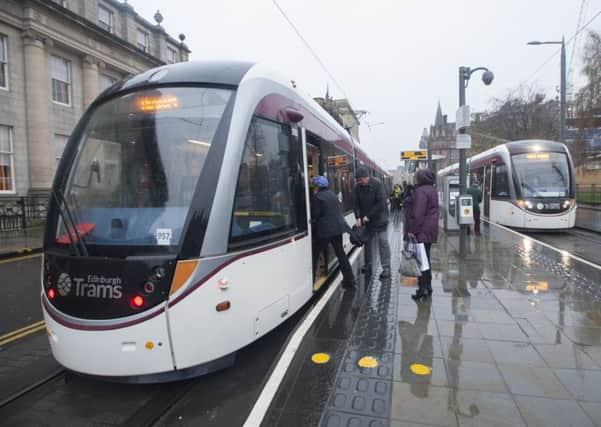Trams to Leith: it’s time to deploy some pessimism bias – John McLellan


What Edinburgh Council really, really wants is a longer tram route and last week revealed the plan to complete the missing three miles of track from Picardy Place to Newhaven would cost £196m instead of the £165m estimated last year. But to be on the safe side, the calculation was modified to include an optimism bias of 6 per cent, in other words allowing for wishful thinking would give a more realistic price of £207m, the figure widely quoted in the subsequent news coverage.
So how do we know that the administration is only 6 per cent optimistically biased, or more to the point that the £196m figure is a robust base on which to make the calculation?
Advertisement
Hide AdAdvertisement
Hide AdThe answer is supposed to lie in the final business case and a raft of back-up paper which is now being studied by councillors.
I’ve been through them because I’m a Conservative councillor and I’m allowed to go into the secret squirrel “data room” where the papers are kept under the watchful eyes of the officers running the project.
We’re not allowed to take the papers away or photograph them in case they fall into the wrong hands, but we’re allowed to take notes as long as we don’t reveal sensitive information. What we can or can’t say isn’t clear so we’re supposed to check with the officers, which is presumably what the administration does when it puts out press releases with figures other councillors haven’t seen.
So you’ll just have to take my word for it that the business case is so full of assumptions that the optimism bias needs an optimism bias. But maybe that’s being unfair because the optimism bias squared has resulted in a contingency fund of another £50m in case the unexpected happens unexpectedly.
Advertisement
Hide AdAdvertisement
Hide AdAs expected, the council leadership has reiterated its robust support for the project last week, so from that we can assume the administration is satisfied that a potential cost of just shy of £260m will still represent value for money. We know from the papers what chance there is that the contingency fund will be needed, but I better not say in case the monitoring officer shops me to the Standards Commission. But let’s just say it’s not slim.
What we do know is that in 18 months the cost has risen by 20 per cent without anything actually happening, and that was after being given the same kind of assurances we are hearing now; that there was a £30m contingency we probably wouldn’t need, that lessons have been learnt from the past. Now the tenders have been received, the £30m contingency contained in the £165m estimate should really have been about £120m and the timetable was a year out.
The business case comes with spreadsheets packed full of numbers in a type size so small it must have been designed for fairies, but the one number I couldn’t find was the magic one where the project no longer represents value for money. The justifications are wrapped up in the language of strategic goals, key development areas and modernising the transport network; much the same arguments as were made when the original project was launched over 15 years ago. What it isn’t is quantifiable, so the amount at which the project becomes unviable is effectively whatever the administration says it is.
And as everyone knows, this is a project for which a considerable amount of engineering work has already been done, the rolling stock and hardware already bought and paid for.
Advertisement
Hide AdAdvertisement
Hide AdMaybe we on the opposition benches should have a pessimism bias built into our case, but we’ve got £776m worth of proof that we’re right.
Leaving no tracks
Using the tram data room comes with a condition, that councillors sign a register so the officers know who’s been in. It’s also a way for the administration councillors to accuse the opposition of “not being interested” if they don’t go, and as if by magic information about who had or hadn’t paid a visit on Day One appeared in last Saturday’s Evening News. Not surprisingly some of my colleagues have now told the officers where they can shove the register. Politely, of course.